Norwegian Textile Letter


Vesterheim Norwegian-American Museum: Building the Collection
By laurann gilbertson, curator, vesterheim norwegian american museum.
Now numbering 24,000 objects, the collection that makes up Vesterheim Norwegian-American Museum in Decorah, Iowa, started in 1877 as a study aid for students attending Luther College. The first donation was a group of birds’ eggs. In the early years, the college’s collection was an assortment of natural history specimens, ethnographic items brought back by Lutheran missionaries serving around the world, relics of historical events, mementoes of important people, and reproductions of classical artworks.
By 1895 faculty and alumni at Luther College officially resolved that Norwegian immigrant materials should be a stated focus of the collection. In doing so the museum became a pioneer in the preservation and promotion of America’s cultural diversity.
The first historic building was added to the grounds in 1913, starting the Open Air Division. No other U.S. museum had collected buildings, though this was already taking place in Scandinavia.
In 1925, in honor of 100 years of emigration, Anders Sandvig (founder of Maihaugen, a major museum in eastern Norway) coordinated a gift of artifacts from Norwegian museums. “May these objects work,” wrote Sandvig, “so that the Norwegian-ness in you will not die too soon, and the connection with the homeland will because of this be tighter. Receive this gift as proof that we follow you all in our hearts, even though the big Atlantic parts us.” The gift took two years to assemble and filled 23 crates. The museum in Nordmøre sent several clothing items, including two linen shirts with extremely fine whitework embroidery. They would have no way of knowing that this gift meant the survival of several cultural treasures when their museum would be destroyed during WWII.

Shirt with whitework embroidery from Valset, Nordmøre, ca. 1830. Donated by Kristiansund Museum (now Nordmøre Museum) as part of a group of gifts from Norwegian museums. LC0697.
After the war, director Inga Bredesen Norstog created a national audience through newspapers and magazines and soon the museum was receiving visitors and artifact donations from all over the United States.
The museum became an independent institution in 1964 and adopted the name “Vesterheim,” which was the term that immigrants used to describe America – their western home – when writing letters home to Norway.
Beginning in the 1960s, director Marion Nelson showed visitors there was art in everyday objects and added fine art to the museum’s collection statement. Today, staff are “refining” the collection – looking to fill gaps to ensure that the objects can tell even more stories of the immigrant experiences. We are also trying to share many of these stories and artifacts through exhibits at the museum, online, and on the road. A selection of 119 textiles can be viewed at http://collections.vesterheim.org/items/browse?collection=3 The “Online Textiles Collection” includes woven, knit, embroidered, quilted, and sewn items. Click on the listing of an item to read more about it. Then click on the photo to see a large full-view and detailed images.

Sjønaleister socks from Hardanger, Norway. This pair is one of 119 textile artifacts on Vesterheim’s Online Collections. LC0298.
In 1967, Vesterheim began an education program to teach traditional handwork skills by bringing instructors from Norway. The first three instructors taught rosemaling (rose painting). Since then, Norwegian instructors have taught all kinds of fiber arts, woodworking, and knifemaking, as well as music and dance. Recent fiber arts teachers have included Marta Kløve Juuhl (warp-weighted loom weaving), Ingebjørg Monsen (pile weave, bunad jacket sewing), Liv Bugge (Norwegian overshot weaves), and Britt Solheim (sheepskin coverlet making). American and Canadian instructors also teach one- to five-day classes at Vesterheim. A highlight for many students is the visit to see artifacts in textile storage for information and inspiration.
Three textile symposia have been held at Vesterheim (1997, 2005, 2009). These have offered opportunities to learn about Norwegian and Norwegian-American textiles, artists, and techniques from both the historical and contemporary perspectives. Speakers and teachers have been brought from Norway for the symposia.
Another special educational opportunity comes in the form of textile study tours to Norway. Katherine Larson for Nordic Heritage Museum organized the first trip in 1999 and then Vesterheim has offered six more trips (with the next trip planned for 2015). The tours combine touring with hands-on learning. There are visits to museums, presentations by curators, tours of factories, and visits to artists in their studios. The philosophy behind the study tours is to travel with people who share a passion for textiles, do things that an independent traveler could not do, and learn a lot! The tours have been popular with people who have seen Norway in a general way before and now want to focus in on textiles. But many first-time travelers have found the tours to be a great introduction to Norway. The tours usually attract a mix of people: weavers, knitters, embroiderers, collectors, textile enthusiasts, friends, and spouses.

Margaret Trussell (Maryland) photographs halvfloss (“half” pile) cushion covers and Kay Larson (Washington) views the back of a billedvev (tapestry) cushion cover at Maihaugen in Lillehammer, Norway. The textiles were brought out specially for the Textile Study Tour to Norway and Sweden in 2007.
No history of Vesterheim is complete without a mention of Lila Nelson, who served as Registrar and Curator of Textiles for 27 years. Lila has had such a significant influence on textile education, collections, research, and outreach at Vesterheim and in the United States that she has received special commendation from the Norwegian government. The April 2012 issue of the Norwegian Textile Letter is dedicated to Lila Nelson and features some of her weavings. When Lila retired in 1991 and I began working with the textile collection, many staffers said I had large shoes to fill. That has been true, but gratefully Lila leaves a clear path of excellence to follow.

“Houses and Chickens” by Lila Nelson. In this small hanging, Lila explored the creative possibilities of dansk brogd, a technique used in southern Norway for coverlets. Lila taught many classes in traditional weaving techniques at Vesterheim. 2011.032.046.
In part two of this article, which will appear in the May, 2014 issue of the Norwegian Textile Letter, take an “armchair” tour of Vesterheim’s textile collection.
Laurann Gilbertson has been Textile Curator at Vesterheim Norwegian-American Museum for 19 years and is now Chief Curator.
Lgilbertson (at) vesterheim.org, 563-382-9681, one thought on “ vesterheim norwegian-american museum: building the collection ”.
Pingback: The Second Digital Issue of the Norwegian Textile Letter | Norwegian Textile Letter
Leave a Reply Cancel reply
Your email address will not be published. Required fields are marked *
Save my name, email, and website in this browser for the next time I comment.
This site uses Akismet to reduce spam. Learn how your comment data is processed .

Robbie LaFleur
Traditional Embroidery in Telemark
For part of the Vesterheim Textile tour we were in Telemark, a deeply traditional part of Norway. We visited the Bø Museum , where a beautiful exhibit of woven bands, embroidered linen textiles, and Hardanger fiddles had newly opened. At a day-long class on June 23, we learned the embroidery stitches found on traditional linen textiles that were used on costumes, to cover food baskets brought to new mothers, to commemorate weddings, and to lie on coffins. In other words, the linens were important objects incorporating traditional designs used to mark the important passages in life. The stitches were tiny, made on a linen base. We saw pieces made as early as 1796. As often happens in a class, we toiled a long day to make a small sample, which only made us appreciate the large pieces even more, both the old pieces and the equally stunning pieces done by our teacher, Helga Bergland.
This is an old example of a coffin cover embroidery, two linen pieces that would be placed over the top of a coffin in the form of a cross.

This is a modern piece made by Helga Bergland.

The bands of the two linen pieces were balanced beautifully, but it you put them side-by-side, you see that they are not exactly alike.

Look at this beautiful detail of Helga’s embroidery, from a piece she displayed during our visit to her studio.

Here is the sampler that Helga developed for the members of our embroidery class to tackle.

As almost a joke, here’s the tiny bit I embroidered that day, made into an ornament so it would not sit lost in a file or notebook.

Share this:
- Print & PDF
One comment
Nice job Robbie, thank you. Veronna
From: Bound to Weave Reply-To: Bound to Weave Date: Sunday, July 7, 2013 10:05 AM To: Veronna Capone Subject: [New post] Traditional Embroidery in Telemark
WordPress.com Robbie LaFleur posted: “For part of the Vesterheim Textile tour we were in Telemark, a deeply traditional part of Norway. We visited the B� Museum, where a beautiful exhibit of woven bands, embroidered linen textiles, and Hardanger fiddles had newly opened. At a day-long class o”
Leave a Reply Cancel reply
Discover more from robbie lafleur.
Subscribe now to keep reading and get access to the full archive.
Type your email…
Continue reading
You must be logged in to post a comment.

Virtual Galleries
Vesterheim’s impressive collection numbers more than 59,000 objects, buildings, artworks, documents, and photographs. Here, you can see a selection from the collection. Enjoy decorative woodcarving, Norwegian rosemaling (decorative painting), jewelry and metalworking, textiles (including knitting, weaving, and folk costume), fine arts, and historical images.
Hover over a photo-tile for basic information on the item. Click on the photo-tile for a full view of the item and additional information, such as dimensions and source. There are additional views of some items.
At this time, only a sampling of Vesterheim’s collection is online. The online Virtual Galleries do not include works by living artists.
Questions about these or other objects in Vesterheim’s collection can be sent to [email protected] .
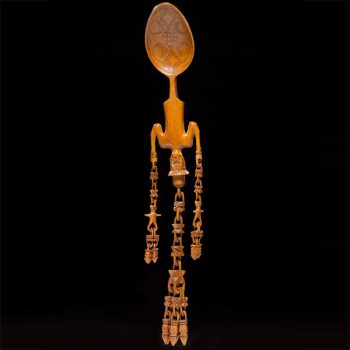
Rigid Heddle Loom
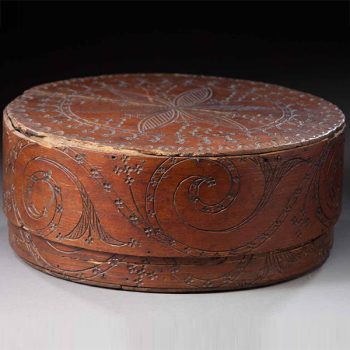
Bentwood Box

Butter Mold

Sending Basket
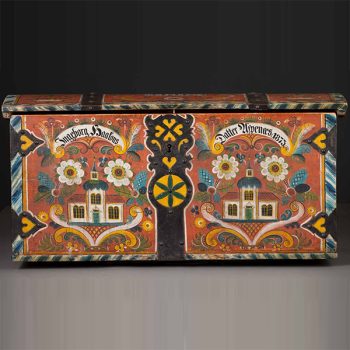
Sugar Bucket
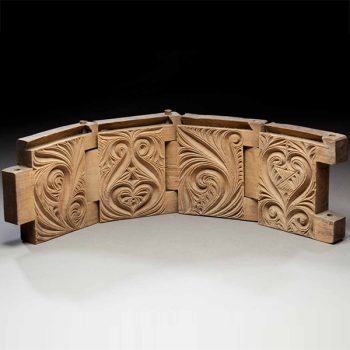
Mangle Board


Hanging Cupboard
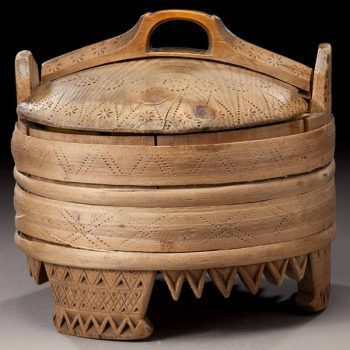
Butter Container
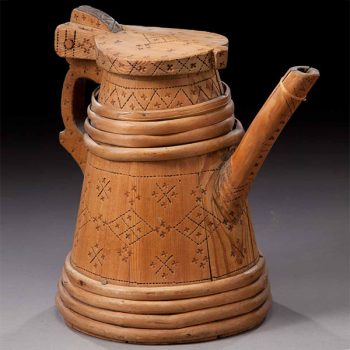
Moscow Metro Tour
- Page active

Description
Moscow metro private tours.
- 2-hour tour $87: 10 Must-See Moscow Metro stations with hotel pick-up and drop-off
- 3-hour tour $137: 20 Must-See Moscow Metro stations with Russian lunch in beautifully-decorated Metro Diner + hotel pick-up and drop off.
- Metro pass is included in the price of both tours.
Highlight of Metro Tour
- Visit 10 must-see stations of Moscow metro on 2-hr tour and 20 Metro stations on 3-hr tour, including grand Komsomolskaya station with its distinctive Baroque décor, aristocratic Mayakovskaya station with Soviet mosaics, legendary Revolution Square station with 72 bronze sculptures and more!
- Explore Museum of Moscow Metro and learn a ton of technical and historical facts;
- Listen to the secrets about the Metro-2, a secret line supposedly used by the government and KGB;
- Experience a selection of most striking features of Moscow Metro hidden from most tourists and even locals;
- Discover the underground treasure of Russian Soviet past – from mosaics to bronzes, paintings, marble arches, stained glass and even paleontological elements;
- Learn fun stories and myths about Coffee Ring, Zodiac signs of Moscow Metro and more;
- Admire Soviet-era architecture of pre- and post- World War II perious;
- Enjoy panoramic views of Sparrow Hills from Luzhniki Metro Bridge – MetroMost, the only station of Moscow Metro located over water and the highest station above ground level;
- If lucky, catch a unique «Aquarelle Train» – a wheeled picture gallery, brightly painted with images of peony, chrysanthemums, daisies, sunflowers and each car unit is unique;
- Become an expert at navigating the legendary Moscow Metro system;
- Have fun time with a very friendly local;
- + Atmospheric Metro lunch in Moscow’s the only Metro Diner (included in a 3-hr tour)
Hotel Pick-up
Metro stations:.
Komsomolskaya
Novoslobodskaya
Prospekt Mira
Belorusskaya
Mayakovskaya
Novokuznetskaya
Revolution Square
Sparrow Hills
+ for 3-hour tour
Victory Park
Slavic Boulevard
Vystavochnaya
Dostoevskaya
Elektrozavodskaya
Partizanskaya
Museum of Moscow Metro
- Drop-off at your hotel, Novodevichy Convent, Sparrow Hills or any place you wish
- + Russian lunch in Metro Diner with artistic metro-style interior for 3-hour tour
Fun facts from our Moscow Metro Tours:
From the very first days of its existence, the Moscow Metro was the object of civil defense, used as a bomb shelter, and designed as a defense for a possible attack on the Soviet Union.
At a depth of 50 to 120 meters lies the second, the coded system of Metro-2 of Moscow subway, which is equipped with everything you need, from food storage to the nuclear button.
According to some sources, the total length of Metro-2 reaches over 150 kilometers.
The Museum was opened on Sportivnaya metro station on November 6, 1967. It features the most interesting models of trains and stations.
Coffee Ring
The first scheme of Moscow Metro looked like a bunch of separate lines. Listen to a myth about Joseph Stalin and the main brown line of Moscow Metro.
Zodiac Metro
According to some astrologers, each of the 12 stops of the Moscow Ring Line corresponds to a particular sign of the zodiac and divides the city into astrological sector.
Astrologers believe that being in a particular zadiac sector of Moscow for a long time, you attract certain energy and events into your life.
Paleontological finds
Red marble walls of some of the Metro stations hide in themselves petrified inhabitants of ancient seas. Try and find some!
- Every day each car in Moscow metro passes more than 600 km, which is the distance from Moscow to St. Petersburg.
- Moscow subway system is the 5th in the intensity of use (after the subways of Beijing, Tokyo, Seoul and Shanghai).
- The interval in the movement of trains in rush hour is 90 seconds .
What you get:
- + A friend in Moscow.
- + Private & customized Moscow tour.
- + An exciting pastime, not just boring history lessons.
- + An authentic experience of local life.
- + Flexibility during the walking tour: changes can be made at any time to suit individual preferences.
- + Amazing deals for breakfast, lunch, and dinner in the very best cafes & restaurants. Discounts on weekdays (Mon-Fri).
- + A photo session amongst spectacular Moscow scenery that can be treasured for a lifetime.
- + Good value for souvenirs, taxis, and hotels.
- + Expert advice on what to do, where to go, and how to make the most of your time in Moscow.
Write your review
- Preplanned tours
- Daytrips out of Moscow
- Themed tours
- Customized tours
- St. Petersburg
Moscow Metro
The Moscow Metro Tour is included in most guided tours’ itineraries. Opened in 1935, under Stalin’s regime, the metro was not only meant to solve transport problems, but also was hailed as “a people’s palace”. Every station you will see during your Moscow metro tour looks like a palace room. There are bright paintings, mosaics, stained glass, bronze statues… Our Moscow metro tour includes the most impressive stations best architects and designers worked at - Ploshchad Revolutsii, Mayakovskaya, Komsomolskaya, Kievskaya, Novoslobodskaya and some others.
What is the kremlin in russia?
The guide will not only help you navigate the metro, but will also provide you with fascinating background tales for the images you see and a history of each station.
And there some stories to be told during the Moscow metro tour! The deepest station - Park Pobedy - is 84 metres under the ground with the world longest escalator of 140 meters. Parts of the so-called Metro-2, a secret strategic system of underground tunnels, was used for its construction.
During the Second World War the metro itself became a strategic asset: it was turned into the city's biggest bomb-shelter and one of the stations even became a library. 217 children were born here in 1941-1942! The metro is the most effective means of transport in the capital.
There are almost 200 stations 196 at the moment and trains run every 90 seconds! The guide of your Moscow metro tour can explain to you how to buy tickets and find your way if you plan to get around by yourself.
Firebird Travel
RUSSIA TRAVEL HOME
Thank you for your enquiry.
RUSSIA TRAVEL PACKAGES A selection of Russian tours to take as they are or adjust to your needs.
THE GOLDEN RING Visit the heart of ancient Russia. What is the Golden Ring?
MOSCOW TOURS What you can see in Moscow.
MOSCOW DAY TRIPS Get out of Moscow and take a relaxing trip to some of these places
ST. PETERSBURG Some of the sights to see in Petersburg
LAKE BAIKAL TOURS Hiking and trekking around the world's deepest lake in the heart of Siberia
RUSSIAN DIGS Come and work in the field on a Russian Archaeological dig. Full training given on site.
TRAVEL TIPS & SERVICES Getting around in Russia
If you do not receive a confirmation email shortly then you have probably incorrectly entered your email.
Number of travelers ">
Special Interests or requests. "> ">
If you experience difficulties please use this link to send Regular Email . All information is treated as confidential

IMAGES
VIDEO
COMMENTS
Laurann Gilbertson has been Textile Curator at Vesterheim for 19 years and is now Chief Curator. She has planned and led eight Textile Study Tours, beginning in 2003. May 2023 This tour is currently full - we are accepting deposits for the waitlist. Vesterheim's tenth Textile Study Tour focuses on the textiles and traditi ...
Our 2023 Vesterheim Textile Tour began in London on May 8, two days after the coronation of King Charles III, while the city was filled with celebration. There we visited Marble Arch and enjoyed a stroll along Oxford Street, with its iconic Selfridges Department Store. The second day brought us to the Victoria and Albert Museum, where we were ...
Our 2023 Vesterheim Textile Tour began in London on May 8, two days after the coronation of King Charles III, while the city was filled with celebration. There we visited Marble Arch and enjoyed a stroll along Oxford Street, with its iconic Selfridges Department Store.
The Vesterheim Norwegian-American Museum has been a great asset and support in my explorations and research. The 2019 Vesterheim Textile Tour was an overflow repeat of the 2017 itinerary, with a variety of visits in Denmark and Southwest Norway. The experience literally "threw me for a loop."
The Vesterheim Norwegian-American Museum's textile tour's second day inspired our imaginations from the get go. Danish knitwear designer and creator Geske Svensson welcomed us to her studio and home on June 15th to show us her creations and describe her creative process. Svensson finds inspiration for her unique creations in historic ...
Vesterheim's Textile Study Tours. Laurann Gilbertson has been Textile Curator at Vesterheim for 19 years and is now Chief Curator. She has planned and led six Textile Study Tours, beginning in 2003. TourNorway with Vesterheim TourNorway with Vesterheim For more info contact Michelle Whitehill 563-382-9681, ext. 240, or [email protected],
Every Trip to Norway is a Textile Tour (At Least Unofficially) August 25, 2015 Robbie LaFleur Scandinavian Weaving, Tapestry, Uncategorized, weaving Leave a comment. "Jul Kvale," by Hannah Ryggen, 1956. As opposed to my last two visits to Norway on Vesterheim Textile Tours, this was a trip to introduce my husband to Norway - mission ...
The 2017 Textile Tour sponsored by the Vesterheim Norwegian-American Museum in June was the first one to add travel to Denmark as well as Norwegian destinations. This brief overview should give you an idea of why these tours sell out as soon as they are announced. Copenhagen was our first stop, and our learning and inspiration began with a ...
Take a tour through our textile collection with Laurann Gilbertson, Vesterheim's Chief Curator. Get some behind-the-scenes views and insights on how Vesterhe...
In part two of this article, which will appear in the May, 2014 issue of the Norwegian Textile Letter, take an "armchair" tour of Vesterheim's textile collection. Laurann Gilbertson has been Textile Curator at Vesterheim Norwegian-American Museum for 19 years and is now Chief Curator. lgilbertson (at) vesterheim.org, 563-382-9681
For part of the Vesterheim Textile tour we were in Telemark, a deeply traditional part of Norway. We visited the Bø Museum, where a beautiful exhibit of woven bands, embroidered linen textiles, and Hardanger fiddles had newly opened.At a day-long class on June 23, we learned the embroidery stitches found on traditional linen textiles that were used on costumes, to cover food baskets brought ...
Virtual Galleries. Vesterheim's impressive collection numbers more than 59,000 objects, buildings, artworks, documents, and photographs. Here, you can see a selection from the collection. Enjoy decorative woodcarving, Norwegian rosemaling (decorative painting), jewelry and metalworking, textiles (including knitting, weaving, and folk costume ...
Moscow Metro private tours. 2-hour tour $87: 10 Must-See Moscow Metro stations with hotel pick-up and drop-off. 3-hour tour $137: 20 Must-See Moscow Metro stations with Russian lunch in beautifully-decorated Metro Diner + hotel pick-up and drop off. Metro pass is included in the price of both tours.
Moscow has some of the most well-decorated metro stations in the world but visitors don't always know which are the best to see. This guided tour takes you to the city's most opulent stations, decorated in styles ranging from neoclassicism to art deco and featuring chandeliers and frescoes, and also provides a history of (and guidance on how to use) the Moscow metro system.
Moscow Metro. The Moscow Metro Tour is included in most guided tours' itineraries. Opened in 1935, under Stalin's regime, the metro was not only meant to solve transport problems, but also was hailed as "a people's palace". Every station you will see during your Moscow metro tour looks like a palace room. There are bright paintings ...
RUSSIA TRAVEL PACKAGES A selection of Russian tours to take as they are or adjust to your needs. THE GOLDEN RING Visit the heart of ancient Russia.